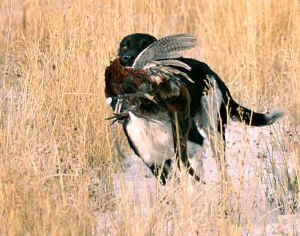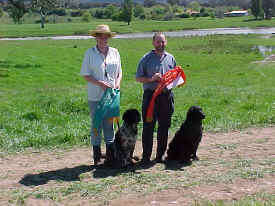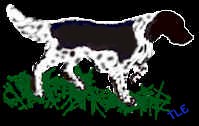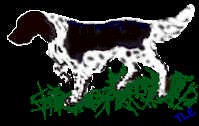Retrieving & Field

What is Retrieving and Field
Trials?
There are two types of ANKC recognised gundog activities, both testing the dogs
natural working instincts
The first type is "Retrieving" this is designed to recreate a
simulated duck hunt, minus the ducks! They are usually held during winter months
around lakes and rivers. The object to be retrieved is catapulted
via a huge slingshot called a "thrower". The dogs are required to stay
in the heel position whilst a gun is fired at the object, then the dog is sent
out to fetch the object. Runs are created on both land and through water, in the
higher classes, blind retrieves (where the object is not catapulted so the dog
can not view its fall), double and
triple retrieves (often the judge decides the order that the objects must be
retrieved) and retrieves where the object is dragged to simulate shooting
game such as rabbits are all options to the judge, who marks the dogs retrieves
based on steadiness to shot, marking ability (remembering where the object
fell), use of the wind, directness of the retrieve, taking directions amongst other points.
"Field" is split into three different types of trials depending on
the breeds of dogs permitted to enter them. Pointer & Setter, Spaniel &
Retriever and Utility (Hunt Point Retrieve) are the three options. Large
Munsterlanders as a HPR gundog participate in Utility field trials. These trials
are held using live free game such as quail. For this reason trials are not
always held in all states, South Australia very rarely has enough game to hold a
trial, Victoria holds the most trials. In South Australia even training days are
difficult often only being run by using caged and released game.
In field trials two dogs are paired up against each other, the dogs are then
required to hunt for the game, point it (or back the dog which finds the game),
put the game up to be shot, stay while the game is shot, then retrieve the game to hand. Both dogs are
scored for each run the highest scoring dog winning the round with the top
scoring dogs making it to the next round and
so on until a winner is found.
For more information visit the page "How titles are gained" .
Large
Munsterlanders were bred to retrieve, as a hunt point retrieve (HPR) gundog they
thrive on the utilising their natural instincts.
The Breed Standard quotes "The Large Munsterlander is a multi-purpose gundog, ideal for the rough shooter.
He has an excellent nose, staying power, and works equally well on land and in
water. A keen worker, easily taught". Never was a truer word written,
to see a Munsterlander work the wind is a thing of beauty. Whilst their marking
ability may not always be as sharp as the retriever breeds their use of their nose more
than makes up the difference.
Pictured below
are some Australian Munsterlanders at trials and training days.
Grand Ch Seelenmeyer Fantasia CD QC ADM
ET "Britta" in the
blind......waiting......
bringing back a
bird
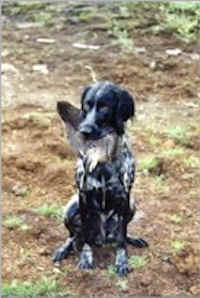
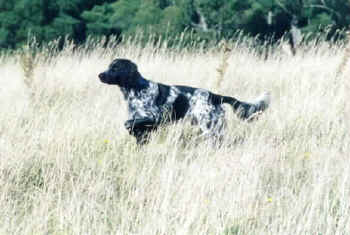
FT Ch Rheinmunst Diamond Ice NRD with a bird and stunning on point
FT Ch Conghyll Elfie owned by Neil &
Sandy McLeod Ch Barry Von Entenschnabel
JW
Australia's first Field Trial Champion
(Imp Gmy) at 9
months
Ch Raene Passion (Imp UK)
Ch
Ghyllbeck Pandion (Imp UK)
Vakuna Muncher "Hana" on point
Ron Frank's "Jake"
owned by John Kilby (Victoria -
Aust)
Cedar Ridge Kennels (North America)
More pictures
from Aussie trials
Britta 3rd at the Lab
Club 1992
Britta after bringing back her first
bird Debbie Hall
& Belle 3rd at
the
Vic Gundog trial 2000
Should you be interested in working your Munsterlander in Australia or elsewhere send me an e-mail and I will put you in touch with someone close by who can give you some advice. As a breed in which maintaining their natural instinct is so important, their are many people world wide that work their dogs so help is never far away.

